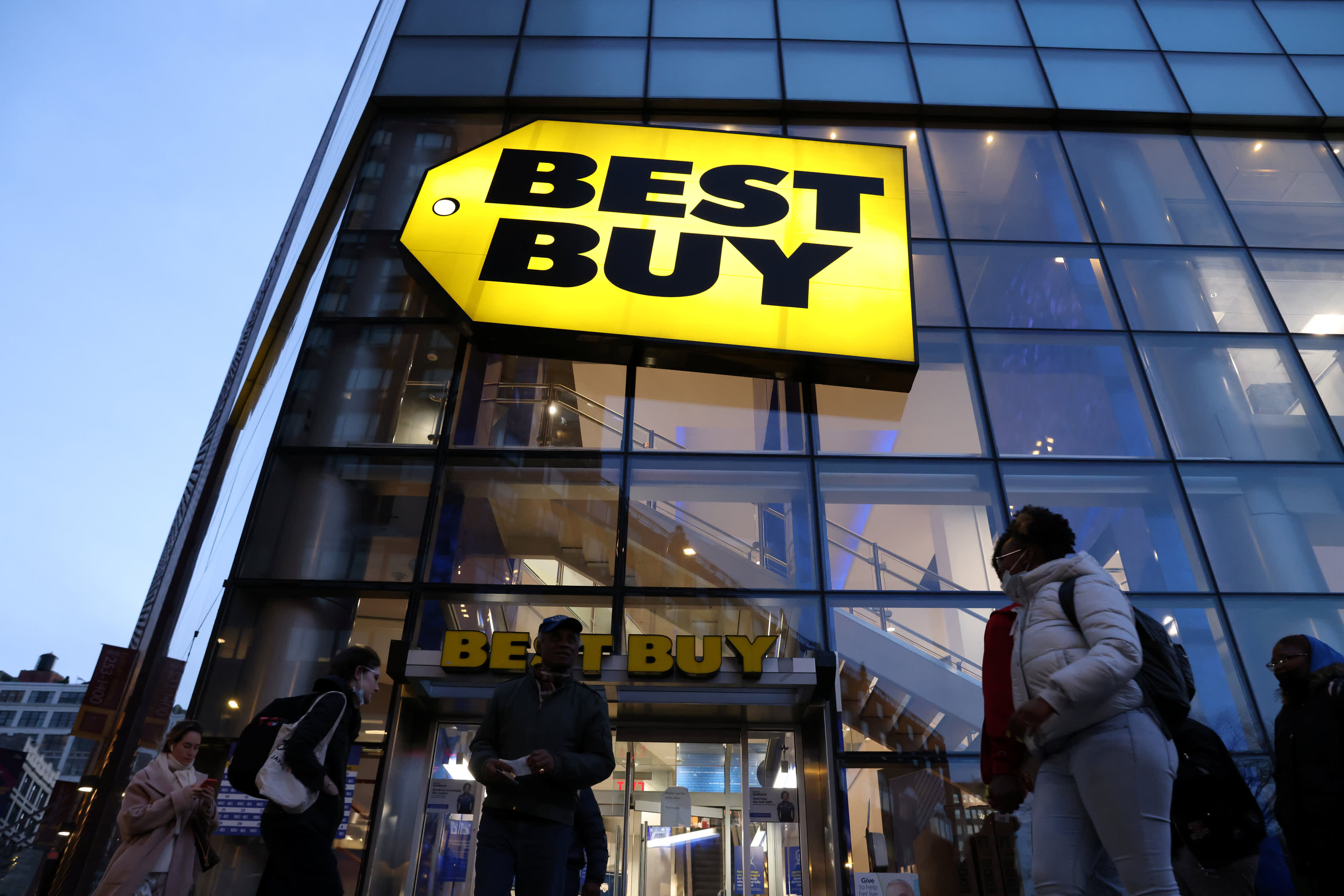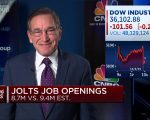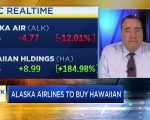
People walk past a Best Buy store in Manhattan, New York City, November 22, 2021.
Andrew Kelly | Reuters
Best Buy cut its full-year sales outlook Tuesday, as the company weathers a period of cooler demand and prepares for price-conscious holiday shoppers.
The consumer electronics retailer beat Wall Street’s quarterly earnings expectations, but fell short on revenue.
Best Buy said it now expects revenue to range from $43.1 billion to $43.7 billion for the fiscal year, down from its previous range of between $43.8 billion and $44.5 billion. The retailer said it expects comparable sales to decline by between 6% and 7.5%, lower than its previous guidance of a 4.5% to 6% drop.
It also lowered the high end of its profit guidance, saying it expects adjusted earnings per share to range from $6 to $6.30 instead of between $6 and $6.40.
CEO Corie Barry said in a news release that Best Buy anticipated softer sales of consumer electronics this year. But as the Federal Reserve presses on with its campaign to cool down inflation by raising interest rates, consumer demand “has been even more uneven and difficult to predict,” she said.
She said the retailer is ready for the holiday season and “prepared for a customer who is very deal-focused with promotions and deals for all budgets.”
Here’s how the company did for the fiscal third quarter, compared with what Wall Street was expecting, based on a survey of analysts by LSEG, formerly known as Refinitiv:
- Earnings per share: $1.29 adjusted vs. $1.18 expected
- Revenue: $9.76 billion vs. $9.90 billion expected
Best Buy, like home improvement retailers, is seeing demand moderate as it follows years of increased purchases of computer monitors, home theaters and appliances during the Covid pandemic. Customers not only have shifted back to spending on experiences, such as airplane and concert tickets, but also have less money for discretionary purchases as they spend more on necessities like food because of inflation.
Barry previously told investors that she expected this fiscal year to be “the low point in tech demand” before purchases pick up again.
Best Buy tends to draw customers with higher incomes than the general population, which helped to prevent a deeper decline as inflation hits consumers. On an earnings call with investors, Barry said some customers chose cheaper TVs during the quarter, but the company did not see as much trade down in other categories. She said the percent of revenue coming from premium products and the percent of purchases over $1,000 was steady compared with the year-ago period.
Deals, however, have become more prevalent for consumer electronics. Barry said industry promotions and discounts have risen compared with last year, and the pre-pandemic fiscal year of 2020.
In the three-month period that ended Oct. 28, Best Buy said net income dropped to $263 million, or $1.21 per share, from $277 million, or $1.22 per share, in the year-ago period. Revenue fell from $10.59 billion a year earlier.
Comparable sales, an industry metric that includes sales online and at stores open at least 14 months, fell by 6.9% year over year and 7.3% in the U.S., as shoppers bought fewer appliances, computers, home theaters and mobile phones. The company said it did see sales growth in gaming.
Best Buy’s online sales declined by 9.3% in the U.S.
Even as it saw lower demand for merchandise, Best Buy drove higher profitability as it made money from its annual membership program, sold products with more favorable margins and had lower supply chain costs.
Shares of Best Buy closed at $67.62 on Tuesday, down less than 1%. So far this year, the company’s stock has tumbled about 16%, underperforming the 18% gains of the S&P 500 during the same period.







